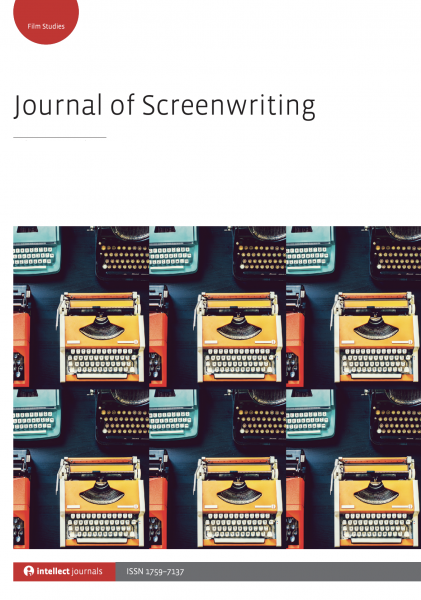Highlighting the articles in the past editions of the Journal of Screenwriting, of which I am the Book Reviews Editor. Hopefully these abstracts will entice you to did a little deeper into the history and future of screenwriting. — Rosanne
That was then this is now … The Canyons – with Paul, Bret, James and Lindsay by Alex Munt
New Hollywood, from the late 1960s to early 1980s, was marked by an innovation in film business (production, marketing, audience) together with an opening up of film form. Today, some 50 years later, film culture is again in flux with new models of funding, production and distribution for the digital age. The impact of these developments on screenwriting is (necessarily) speculative at this stage. The focus of this article is on screenwriter/director Paul Schrader, a jump-cut from Taxi Driver (1976) to The Canyons (2013) – his experiment in ‘post-theatrical cinema’ with novelist/screenwriter Bret Easton Ellis. The film was written for microbudget and crowdfunded on the Kickstarter platform. It assembles the notorious cast of porn star James Deen and celebrity maelstrom Lindsay Lohan. The Canyons rolled out with an aggressive online marketing strategy and innovative ‘day and date’ distribution model with an eye to video on demand. Larry Gross has described the film as belonging to ‘this cultural moment’. In this analysis of The Canyons I ask: What does it mean to conceive, and write, a screenplay for the present, for ‘now’? How does screenplay development and creative collaboration differ in a crowdfunded/microbudget environment? How does the film interact with new forms, and aesthetics, appropriate to this ‘cultural moment’? In the final part of the article I attempt to situate the film within a wider narrative framework via Schrader’s diagnosis of ‘narrative exhaustion’, Douglas Rushkoff’s theory of ‘present shock’ and Ellis’ rumination on the American ‘post-empire’ condition.


The Journal of Screenwriting is an international double-blind peer-reviewed journal that is published three times a year. The journal highlights current academic and professional thinking about the screenplay and intends to promote, stimulate and bring together current research and contemporary debates around the screenplay whilst encouraging groundbreaking research in an international arena. The journal is discursive, critical, rigorous and engages with issues in a dynamic and developing field, linking academic theory to screenwriting practice.
Get your copy and subscription to the Journal of Screenwriting Today!
* A portion of each sale from Amazon.com directly supports our blogs
** Many of these books may be available from your local library. Check it out!

![03 What Price Hollywood from “Female Creatives & A Star Is Born” with Dr. Rosanne Welch [Video]](https://rosannewelch.com/wp-content/uploads/2021/09/rmw-women-creatives-star-is-born-usc-03.jpg)



![02 Women Writers Matter from “Female Creatives & A Star Is Born” with Dr. Rosanne Welch [Video]](https://rosannewelch.com/wp-content/uploads/2021/09/rmw-women-creatives-star-is-born-usc-02.jpg)



![01 Introduction from “Female Creatives & A Star Is Born” with Dr. Rosanne Welch [Video] [CC]](https://rosannewelch.com/wp-content/uploads/2021/03/rmw-women-creatives-star-is-born-usc.jpg)


